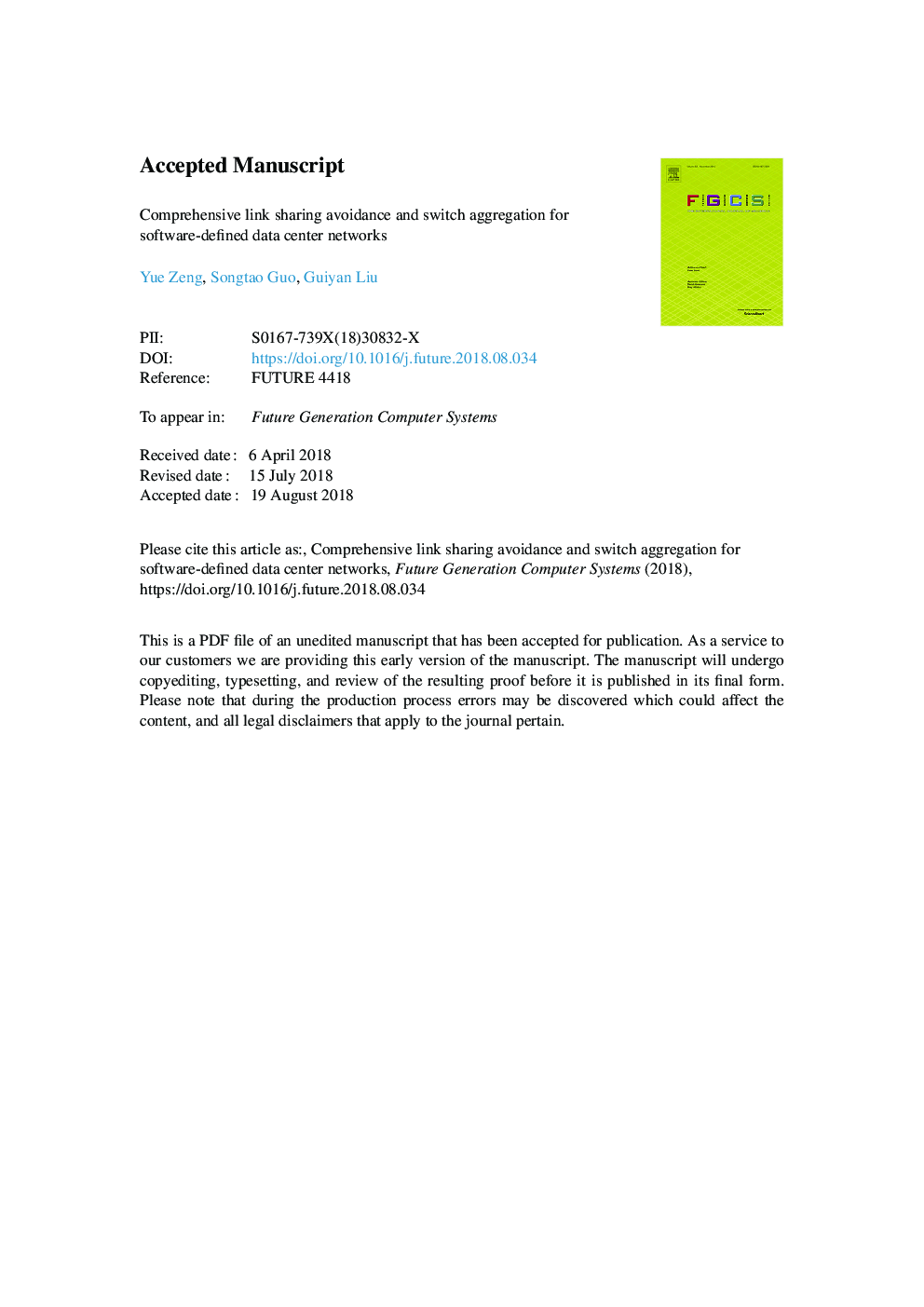| Article ID | Journal | Published Year | Pages | File Type |
|---|---|---|---|---|
| 8960165 | Future Generation Computer Systems | 2019 | 28 Pages |
Abstract
An effective way to reduce network energy consumption of data center networks (DCNs) is to activate network elements as few as possible, complete transmission in as short a time as possible, and set unnecessary network elements to sleep mode. At present, most existing energy saving works considered the network energy saving from the dimension of time or power separately. However, in fact these two dimensions can interact with each other, i.e., reducing the network delay may lead to the increase of network energy consumption, and vice versa. In this paper, two dimensions of time and power are comprehensively studied in the Minimum Network Energy Consumption (MNEC) problem. First of all, we formulate the MNEC problem by considering both time and power, and prove that it is a NP-hard problem. Furthermore, we propose a heuristic Integrated Time and Power (ITP) algorithm, which combines the link sharing avoidance algorithm to reduce the network delay from the dimension of time as well as the switch aggregation algorithm to reduce the energy consumption from the power dimension. Finally, the performance of ITP algorithm is evaluated under different network topology, network size, traffic size and flow number under the network environment based on Mininet and Ryu controller. Experimental results show that the ITP algorithm outperforms the existing network energy saving algorithm in terms of energy consumption.
Keywords
Related Topics
Physical Sciences and Engineering
Computer Science
Computational Theory and Mathematics
Authors
Yue Zeng, Songtao Guo, Guiyan Liu,
